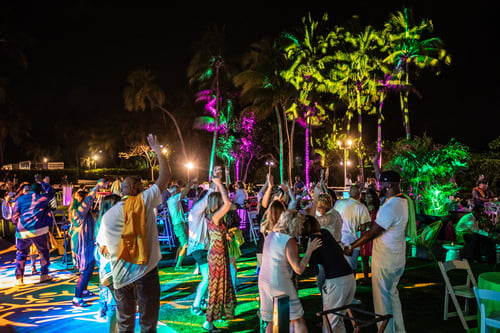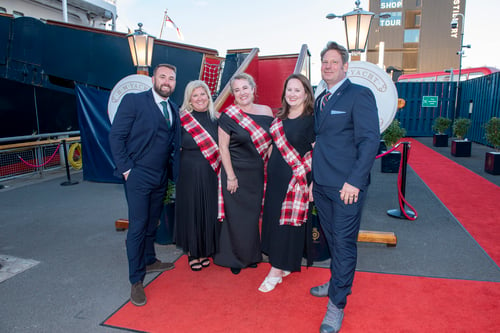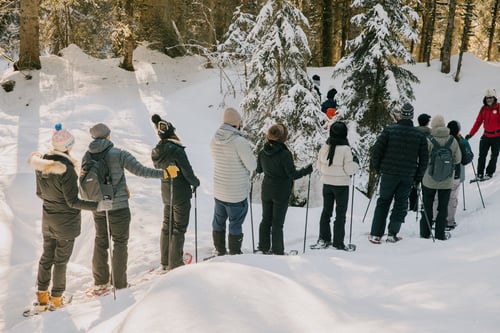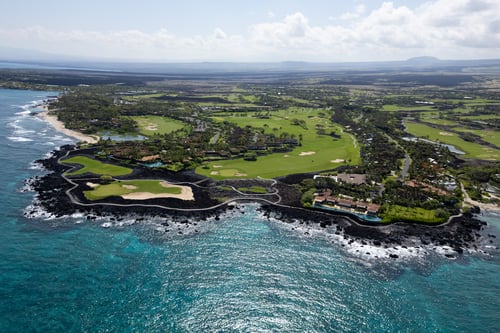In today’s fast-paced business world, keeping employees engaged and motivated is more important — and more challenging — than ever. Traditional recognition programs often fall short, leaving teams feeling undervalued and disconnected. That’s where thoughtfully designed travel experiences can make a real difference. Let's dive into why engagement is so important for organizations and how incentives can be the solution.

Quick Links
- Why Employee Engagement Needs a Reboot
- The Science Behind Travel-Based Engagement
- What Makes Corporate Incentive Travel High-Impact
- 5 Ways to Increase Engagement Through Travel
- Common Mistakes: What Not To Do in Travel Incentive Planning
- Final Impression: Travel as a Human-Centered Business Strategy
Why Employee Engagement Needs a Reboot
Employee engagement has become one of today’s most pressing business challenges. After years of navigating uncertainty, many teams feel disconnected and fatigued, leading to turnover.
In response, organizations are doubling down on recognition efforts, but many are finding that old approaches no longer motivate or connect with employees the way they once did. So, what’s not working in employee recognition today? Traditional rewards—gift cards, bonuses, or employee-of-the-month plaques—once felt meaningful. Now, they barely register. The problem lies in motivation. To truly engage employees, organizations must offer something deeper: memorable, shared experiences that celebrate their impact and value to the organization.
Here’s how to increase employee engagement: through travel experiences that inspire and connect. Luxury corporate incentive travel doesn’t just reward results — it creates moments that matter. When employees share unforgettable adventures, they build deeper relationships and lasting memories. More importantly, these experiences remind them that their company values who they are, not just what they do.
The Science Behind Travel-Based Engagement
Why does travel work better than cash bonuses? Corporate incentive travel doesn’t just check a box. Employee rewards programs re-energize your team, creating emotional memories that continue to motivate long after the experience ends.
For leaders focused on retention and ROI, the case for experiential rewards is clear: shared experiences boost satisfaction, morale, and productivity in ways that traditional rewards simply can’t. But as the workforce evolves, so do expectations. Younger generations are redefining what makes a reward meaningful. According to the Incentive Research Foundation, “Gen Z and Millennials’ desire for choice is being met with increased flexibility in activity, agenda, and dining options on incentive travel programs.” Today’s high-achieving employees want programs that feel personal and empowering, not one-size-fits-all. Successful planners are designing experiences with flexibility at the core, ensuring every detail resonates with what this new generation values most.
The reason why travel as a retention strategy works is psychological:
- Anticipation fuels motivation. Planning and looking forward to a trip provides a significant mood boost, enhancing focus and performance.
- Shared experiences create social bonds. Traveling together strengthens interpersonal relationships and company culture in ways that no bonus ever could.
- Status and recognition matter. Earning an exclusive luxury travel reward through an incentive program signals achievement and belonging within a high-performing group.

What Makes Corporate Incentive Travel High-Impact
Designing personalized incentive travel and exclusive employee reward experiences isn't just about choosing the right destination; it’s about curating emotional impact.
Personalization
Not all employees want the same destination or format. What excites one group might not resonate with another, making it essential to customize the experience to their interests and values.
- Tailor excursions, gifting, and themes to individual preferences. You’ll also want to consider your specific audience’s interests when determining destination selection.
- Use post-event data and feedback to understand what resonated most with your guests.
Personalization also extends to how recognition is delivered. Consider aligning each trip’s message with what motivates that audience—camaraderie, competition, or creativity, for example. Even subtle touches, such as custom welcome gifts, curated excursion options, or personalized notes from leadership, communicate genuine appreciation and make participants feel valued and seen.
Select top destinations that match their unique personality and goals (for example, consider sun-soaked beaches in the Caribbean for relaxation and reward or historic European cities for culture, connection, and inspiration).
Ultimately, the goal is to create experiences that feel special but still within reach—rewards that inspire without feeling out of touch.
Exclusivity
Luxury incentive travel enhances perceived value through curated experiences and exclusive access.
Think of exclusivity that feels both earned and unforgettable.
- Behind-the-scenes experiences that can’t be replicated independently.
- Private dinners in historical venues.
- Intimate tastings and workshops led by local experts.
- Wellness retreats in newly renovated, high-end resorts.
Exclusive experiences create a sense of pride and belonging. It’s not the luxury that matters most, but the meaning behind it—the care, intention, and feeling of being truly seen.
Recognition
Travel incentive programs aren’t an entitlement—it’s a celebration of achievement. Framing the experience as a meaningful reward tied to company goals reinforces purpose. Participants should not only feel appreciated but also proud to represent their organization.
Recognition is most powerful when it’s public, purposeful, and personal.
- Celebrate winners in front of peers and leadership.
- Connect their success stories to company growth or cultural values.
Acknowledging not just what employees achieve in your travel incentive programs, but also how they do it—through teamwork, innovation, or resilience—creates a ripple effect of motivation throughout the organization.

4 Ways to Increase Engagement Through Travel
If you’re exploring how to increase employee engagement through travel, focus on personalized employee recognition ideas that extend value before, during, and after the trip. The most successful travel incentive programs for sales teams and beyond focus on making travel more effective—intentionally building anticipation, creating emotional connections, and sustaining engagement long after the plane lands.
1. Align Recognition with Company Values
Recognition rooted in culture isn’t just a benefit; it’s a shared story of what matters most to your people.
- Define the “why.” Clearly communicate what achievements the trip celebrates and how they align with broader business goals.
- Make it visible. Publicly recognize winners at events and through internal communications, reinforcing both performance and purpose.
- Show the ripple effect. During the experience, highlight how participants’ success impacts the team or company as a whole.
2. Build Anticipation with Pre-Trip Communication
Excitement begins long before takeoff—great programs harness that anticipation, turning it into lasting motivation and momentum.
- Create a countdown campaign. Send teaser emails, destination reveals, and essential know-before-you-go information to build excitement.
- Involve participants early. Early input from your attendees on elements like excursions or gifting lets you design a program that truly resonates with them.
- Personalize the experience. Send welcome kits or handwritten notes from leadership before departure. Also, consider providing activity options for attendees to choose from during registration, allowing them to shape their own journey.
3. Extend Engagement Through Storytelling
Embedding storytelling into your culture ensures every incentive trip powers continuous engagement and connection throughout the year.
- Build community through reflection. Invite attendees to share their favorite memories or lessons learned.
- Capture the moments. Hire photographers or videographers to document highlights and authentic reactions.
- Share across platforms. Showcase recaps in newsletters, social channels, or at company meetings.
4. Foster Lasting Connections
Travel incentive programs do more than reward performance—they inspire connections that an office environment can’t replicate.
- Blend structure and spontaneity. Allow unstructured time, so authentic relationships can form organically.
- Design connection points. Plan team activities, shared meals, or leadership-led discussions to encourage interaction.
- Keep connections alive post-trip. Launch mentorship programs or peer networks that extend collaboration beyond the event.

Common Mistakes: What Not To Do in Travel Incentive Planning
Even standout travel incentive programs can miss their full potential. Avoid these common planning pitfalls to keep your program on track.
Making It One-Size-Fits-All
Generic travel incentives can fall flat. Every team is different; what excites one group might completely miss the mark for another. The key is to know your people.
- Design experiences that reflect your team’s personalities and preferences. This shows employees that leadership is paying attention—and that recognition is earned, not automatic.
- Review past program data, survey results, and post-event feedback to see what truly resonates.
Focusing on Aesthetics, Not Impact
A beautiful destination means little without a clear purpose or story behind it. Incentive travel should inspire, connect, and reinforce performance goals—not simply impress.
- Build narratives that connect the trip experience to business objectives, company culture, and personal growth.
- Define the program’s “why” before selecting the “where.”
Neglecting Measurement and Post-Program Follow-Up
One of the biggest mistakes companies can make? Treating corporate incentive travel like a one-and-done event. Keep the momentum going and use what you learn—both the data and the emotion—to refine your next program and show measurable results.
- Ask participants what resonated through a brief post-trip survey or team debriefs.
- Share photos, highlight reels, and personal stories, so the celebration continues company-wide.

Final Impression: Travel as a Human-Centered Business Strategy
Incentive travel is more than a reward—it’s a catalyst for connection, culture, and commitment. When designed with intention, it promotes appreciation, loyalty, and performance that last long after the trip ends.
At Bishop-McCann, we know how to increase employee engagement through travel that leaves a lasting impact. Our team blends custom employee recognition ideas, creativity, and seamless execution to craft high-end employee rewards programs that motivate, inspire, and deliver measurable results.
See what meaningful recognition looks like in action. Connect with Bishop-McCann’s experts to plan an experience that drives engagement and ROI.

